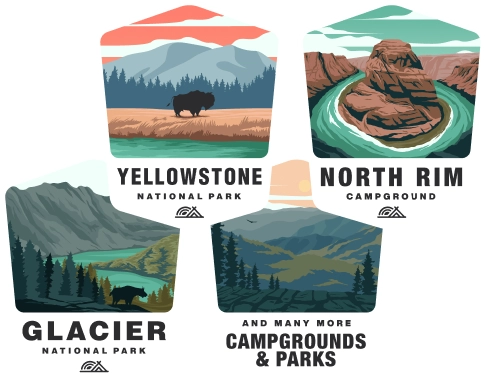Camping at Barton Warnock Visitor Center
Overview of Barton Warnock Visitor Center
The Barton Warnock Visitor Center, also known as Barton Warnock Environmental Education Center, is a significant gateway to the Big Bend region of Texas. It serves as a starting point for exploring the Big Bend Ranch State Park, which is the largest state park in Texas, and offers an array of educational resources, exhibits, and information about the local flora, fauna, geology, and history.
Location
The visitor center is located near the border of the United States and Mexico, alongside the Rio Grande. Specifically, it can be found on the eastern edge of the Big Bend Ranch State Park on FM 170, just outside the town of Lajitas in West Texas.
Facilities and Exhibits
-
Exhibits: The center features a wide variety of interactive and informative exhibits. These exhibits often focus on the natural history of the Big Bend region, including its plants, animals, geology, and fossils.
-
Gardens: Adjacent to the center is a desert botanical garden that showcases the native plant species of the Chihuahuan Desert.
-
Gift Shop: There is a gift shop that sells books, maps, souvenirs, and educational material about the Big Bend area.
-
Amenities: Visitors can find restrooms, picnic areas, and parking facilities.
Camping and Outdoor Activities
Visitors who are looking to camp in the area will find that Big Bend Ranch State Park offers primitive backcountry campsites, as well as sites with more amenities. To stay at these sites, reservations are recommended and sometimes required.
Hiking and Trails
Barton Warnock Visitor Center serves as the trailhead for several hiking trails, varying in difficulty, that traverse the diverse landscapes of the Chihuahuan Desert and lead into the surrounding hills and canyons.
Educational Programs
The center offers a variety of educational programs for all ages, including guided hikes, workshops, and lectures on the natural and cultural history of the region.
Operating Hours
Operating hours vary by season, so it's best to check in advance before planning a visit. Typically, the visitor center is open 7 days a week during high visitor seasons.
Admission Fees
There may be an admission fee to enter the park, and separate fees for different activities or permits such as overnight camping.
Important Considerations for Campers
-
Reservations: Due to the limited number of campsites, it's advised to make reservations well in advance.
-
Water Availability: The arid environment means water is scarce, so campers need to bring plenty of their own.
-
Weather Conditions: The desert can experience extreme temperatures, so it's wise to prepare for both hot and cold weather.
-
Wildlife: As with any natural area, wildlife encounters are possible, so it's important to understand safety precautions regarding local wildlife.
Additional Tips
-
Leave No Trace: To preserve the environment, visitors should follow the Leave No Trace principles.
-
Local Rules and Regulations: Familiarize yourself with state park rules, such as fire regulations, vehicle use, pet guidelines, and permit requirements.
-
Emergency Plan: Given the remote nature of the area, campers should have a plan in case of emergency, including knowledge of the closest medical facilities.
For the most current and comprehensive information, it's best to directly contact the visitor center or visit the official park website before your trip.
